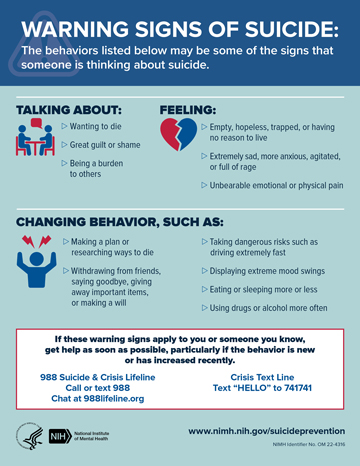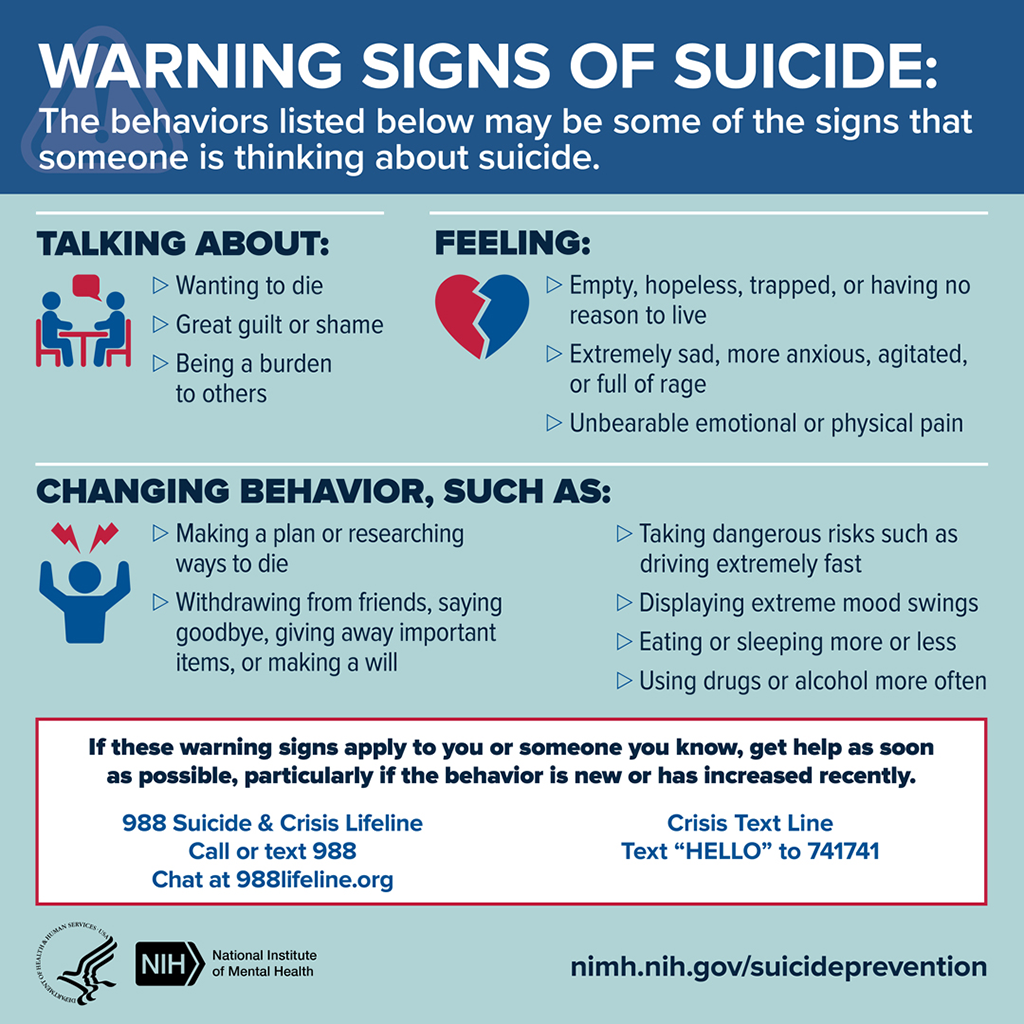Warning Signs of Suicide
The behaviors listed below may be some of the signs that someone is thinking about suicide.
Talking about:
- Wanting to die
- Great guilt or shame
- Being a burden to others
Feeling:
- Empty, hopeless, trapped, or having no reason to live
- Extremely sad, more anxious, agitated, or full of rage
- Unbearable emotional or physical pain
Changing behavior, such as:
- Making a plan or researching ways to die
- Withdrawing from friends, saying goodbye, giving away important items, or making a will
- Taking dangerous risks such as driving extremely fast
- Displaying extreme mood swings
- Eating or sleeping more or less
- Using drugs or alcohol more often
If these warning signs apply to you or someone you know, get help as soon as possible, particularly if the behavior is new or has increased recently.
988 Suicide & Crisis Lifeline
Call or text 988
Chat at 988lifeline.org
Crisis Text Line
Text “HELLO” to 741741
Learn more about suicide prevention.
U.S. DEPARTMENT OF HEALTH AND HUMAN SERVICES
National Institutes of Health
National Institute of Mental Health
NIMH Identifier No. OM 22-4316
Revised 2022


